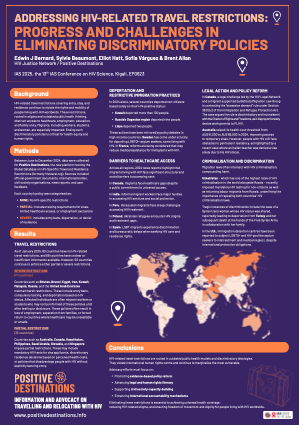Translated with Google translate. For original article in Uzbek, please scroll down.
Foreigners with HIV and tuberculosis will be banned from working in Uzbekistan
The Senate of Uzbekistan has approved a law according to which foreign citizens diagnosed with HIV/AIDS or tuberculosis will not be able to obtain a work permit in the country.
The explanatory note to the law notes that the number of citizens returning from abroad has increased. In 2024, out of 1.7 million who returned, only 25% underwent voluntary testing for HIV – the infection was detected in 1,512 people, writes Fergana.
Since the statistics only cover those who were voluntarily tested, it remains unclear how widespread infectious diseases are among those who did not take tests.
In this regard, mandatory medical examination for HIV is being introduced for citizens of Uzbekistan aged 18 to 60 years who have been abroad for more than 90 days, as well as for foreigners and stateless persons permanently residing or coming to the country for the purpose of employment.
For citizens of Uzbekistan and stateless persons permanently residing in the republic, the examination will be free of charge — at the expense of the state budget. But labor migrants and foreigners will have to pay for it themselves or at the expense of the employer.
In case of detection of HIV/AIDS or tuberculosis, foreign citizens will be officially denied the right to employment.
The law also stipulates that private employment agencies must train citizens traveling abroad in the rules of stay in the countries of employment.
The document will come into force after it is signed by the President of Uzbekistan.
Иностранцам с ВИЧ и туберкулёзом запретят работать в Узбекистане
Сенат Узбекистана одобрил закон, согласно которому иностранные граждане, у которых выявлены ВИЧ/СПИД или туберкулез, не смогут получить разрешение на трудовую деятельность в республике.
В пояснении к закону отмечается, что число граждан, возвращающихся из-за рубежа, увеличилось. В 2024 году из 1,7 млн вернувшихся лишь 25% прошли добровольное тестирование на ВИЧ — инфекция была выявлена у 1512 человек, пишет Фергана.
Так как статистика охватывает только добровольно обследованных, остается неясным, насколько широко распространены инфекционные заболевания среди тех, кто не сдавал анализы.
В связи с этим вводится обязательное медицинское обследование на ВИЧ для граждан Узбекистана в возрасте от 18 до 60 лет, которые находились за границей более 90 дней, а также для иностранцев и лиц без гражданства, постоянно проживающих или приезжающих в страну с целью трудоустройства.
Для граждан Узбекистана и лиц без гражданства, постоянно проживающих в республике, обследование будет бесплатным — за счет госбюджета. А вот трудовым мигрантам и иностранцам придется оплачивать его самостоятельно, либо за счет работодателя.
В случае выявления ВИЧ/СПИДа или туберкулеза, иностранным гражданам будет официально отказано в праве на трудоустройство.
Также законом предусмотрено, что частные агентства занятости должны обучать выезжающих за границу граждан правилам пребывания в странах трудоустройства.
Документ вступит в силу после его подписания президентом Узбекистана.

